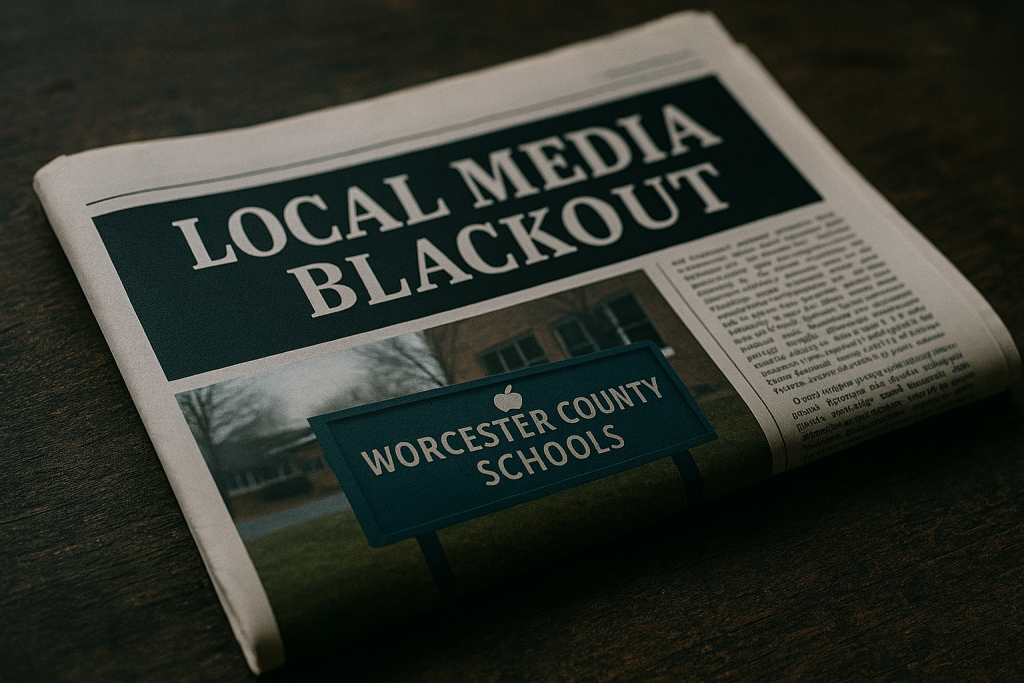

Record Billions in Spending, Yet Budgets Are Being Cut: The Results of Maryland’s Education Blueprint are coming due.
The state of Maryland is undergoing a significant transformation in its education system, driven by the ambitious Blueprint for Maryland’s Future, a comprehensive reform plan aimed at elevating the quality of education across the state. Despite the promise of billions of dollars in funding, schools are finding it necessary to make budget cuts. This contradiction is a source of concern for educators and policymakers alike, particularly in Cecil County, where financial strains are becoming increasingly apparent.
Challenges Facing Cecil County and Beyond
Cecil County Board of Education, under the leadership of Superintendent Jeffrey Lawson, has expressed serious concerns about its financial stability. A $9 million budget gap looms large, forcing the district to consider layoffs and other cost-saving measures. This financial predicament is not unique to Cecil County; it is emblematic of broader challenges faced by school districts across Maryland.
Worcester County similarly faced siginicant shortfalls leading to a political firestorm in recent and ongoing board of education elections.
Several factors contribute to this financial strain:
- Depletion of Federal Pandemic-Relief Funds: During the height of the COVID-19 pandemic, federal relief funds provided a temporary financial cushion for many school districts. With these funds now exhausted, districts are struggling to maintain the same level of services.
- Rising Inflation and Healthcare Costs: Inflation affects every aspect of school operations, from the cost of supplies to transportation. Healthcare costs are a significant and growing burden on school budgets.
- Mandated Teacher Salary Increases: The Blueprint mandates that teacher salaries reach a minimum of $60,000 by 2026, adding further pressure on already tight budgets.
Specific vs. General Funding
The Blueprint for Maryland’s Future focuses its funding on specific programs designed to address inequities and improve educational outcomes. While these targeted investments are crucial, they do not cover general operating expenses. This means that while certain programs receive adequate funding, other essential areas may face cuts.
Districts are required to allocate 75% of per-pupil funds directly to student-related expenditures, limiting their flexibility in managing overall budgets. This rigid allocation can lead to difficult decisions, such as increasing class sizes or cutting staff, as seen in Cecil County where 70 school positions, including 41 teachers, are being eliminated.
The Broader Financial Landscape
Maryland’s counties rely heavily on a mix of federal, state, and local taxes to fund their education systems. However, the Blueprint changes the funding formulas to address disparities, which, while beneficial in some respects, also places additional burdens on counties to find new revenue sources. With no dedicated revenue stream for the Blueprint beyond 2027, the state’s bond rating is at risk, according to Moody’s, which recently downgraded Maryland’s credit outlook due to these fiscal challenges.
Some counties, like Montgomery County, despite their relative wealth, are facing substantial deficits. Montgomery County is grappling with a $30 million deficit and has been forced to make cuts, underscoring that even affluent areas are not immune to the financial challenges posed by the Blueprint.
Worcester County is considered the wealthiest county in Maryland according to the state’s funding formula. However, this wealth is largely concentrated in Ocean City, where few students actually live and attend school. Consequently, the southern end of Worcester County, which includes many low-income and traditionally underserved communities, does not benefit from the extra resources provided by the Blueprint funds. This results in more local funding requirements.
Taxation and Local Government Responses
Counties have limited options for raising taxes. Many, including Montgomery County, have already maxed out their income tax rates, leaving little room to maneuver. Consequently, some state and local governments might need to raise other taxes or cut services to fund the Blueprint’s ambitious goals.
The tension between state mandates and local financial realities is evident in the disagreements between Cecil County Executive Danielle Hornberger and Superintendent Lawson over budget priorities. This discord reflects a broader challenge of aligning local financial capabilities with state-driven educational reforms.
Adapting to the Blueprint
While some districts are struggling, others are finding ways to adapt. Howard County, for example, managed to save certain programs through the use of one-time funds, while Baltimore County Superintendent Myriam Rogers has focused on aligning budget items with available revenue sources. These examples highlight the potential for creative budgeting and strategic financial planning.
Teacher advocates argue that some local leadership has been slow to fully embrace and adapt to the Blueprint’s requirements, further complicating the financial landscape. The call for more innovative and flexible budgeting strategies is becoming louder as districts seek to balance mandated reforms with fiscal realities.
Conclusion
The Blueprint for Maryland’s Future represents a bold and necessary step toward improving educational outcomes and addressing long-standing inequities in the state’s education system. However, the financial challenges it introduces cannot be overlooked. As federal pandemic-relief funds run dry, inflation rises, and healthcare costs soar, school districts are left grappling with significant budget gaps.
Cecil County’s experience, marked by budget shortfalls and staff reductions, is a microcosm of the broader issues at play. Without a dedicated revenue source for the Blueprint beyond 2027, and with counties facing limited options for raising additional funds, the financial sustainability of Maryland’s educational reforms remains uncertain. Balancing the ambitious goals of the Blueprint with the fiscal realities of local governments will require innovative solutions, collaboration, and perhaps, difficult decisions in the years ahead.
Dig Deeper With Our Longreads
Newsletter Sign up to get our best longform features, investigations, and thought-provoking essays, in your inbox every Sunday.
The MEN was founded by John Huber in the fall of 2020. It was founded to provide a platform for expert opinion and commentary on current issues that directly or indirectly affect education. All opinions are valued and accepted providing they are expressed in a professional manner. The Maryland Education Network consists of Blogs, Videos, and other interaction among the K-12 community.











